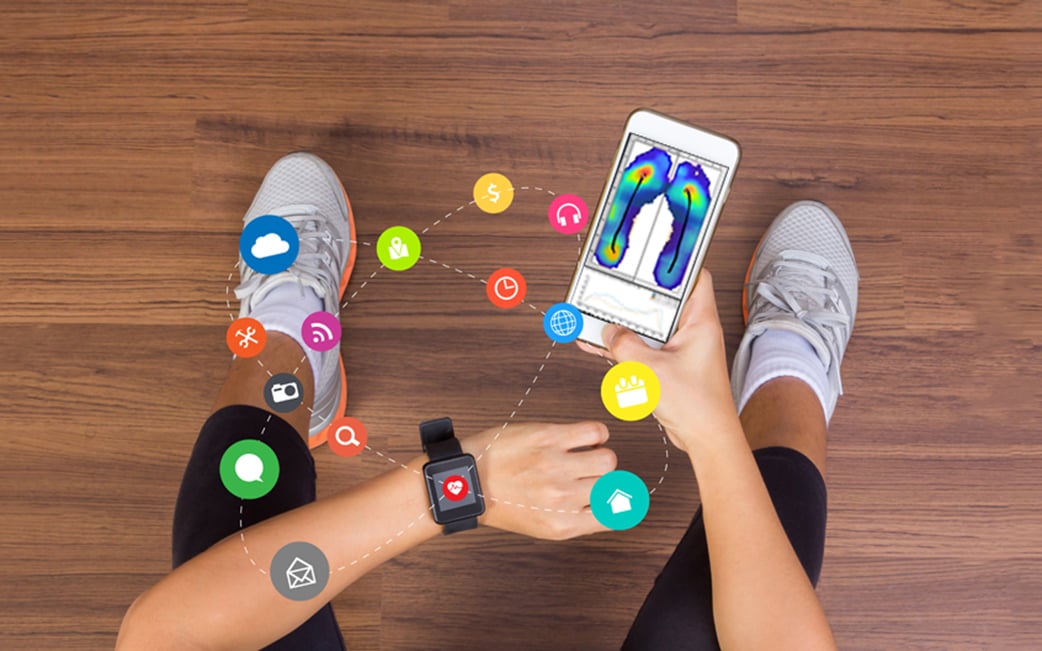AI-Powered, High-Tech, and Affordable
For runners, there are a few things that are inalienably true: You’ll need new shoes after 300 miles or so; if committedly racing, an injury at some point is inevitable; and the better you run, the better you’ll both feel and perform.
Now imagine democratizing athletic coaching to the extent that everyone could have access to a personal running coach who’d provide real-time, data-driven insight into how each person could avoid injury, incrementally improve performance, and maximize the life of their expensive shoes.
This coach would research other proven training and biomechanical approaches, rest protocols, and nutrition methodologies for enhanced performance. They would give unique-to-you advice on how and when to moderate your running pace and suggest specific changes in technique that would result in measurable increases on your stamina and speed.
Now, what if you learned this exceptional coach exists as an AI-powered, dynamic pressure imaging insole? That’s the capability of Intelligent Dynamic Sensing and XSENSOR’s Intelligent Insoles | Pro.
While this specific use-case isn’t yet available in the market, the technology is there and capable of delivering.
Intelligent Dynamic Sensing: A “Smarter” Shoe
The evolution of sensor technology, Internet of Things (IoT), and high-performance communication networks is fundamental to the development of new and more powerful applications. XSENSOR’s Intelligent Dynamic Sensing (IDS) brings all three together as technology that can be integrated into any “hardware” humans interact with – from almost every kind of ‘wearable’ to “seats” to all manner of footwear – including, of course, running shoes.
Measuring the performance of both surface (static) and dynamic (moving) surfaces is hard. Combining this with related motion or image sensor data in a visual, actionable and “smart” way is even harder. Fortunately, IDS, is up to the task.
IDS is a powerful system of sensors and software that continually captures, measures, and adapts to the sensor conditions in real time. Combined with the highest quality visualizations, rich data, and AI-powered analysis, the result is unprecedented optimized product and human performance, comfort, and safety. In this case, it also contributes to a new generation of insoles to create the “smartest” shoe possible.
Virtual Running Coach
Imagine improving athletic performance with gait data collected in real time from an ultra-thin, flexible sensing insole embedded with compact, wireless electronics unnoticeable to the user. The runner only feels cushioned support while the insole discreetly collects foot detailed pressure data.
Over time, personalized, comprehensive gait analysis can help users self-diagnose and evaluate chronic ankle instabilities or potential lower extremity injuries; easily identify running asymmetries or other changes in technique that develop with fatigue. Now, imagine all this data visually relayed to a wearable. Data consumption is democratized, as the reporting doesn’t require expertise to digest but can be easily understood by an average user.
With running dysfunctions in the gait cycle identified, individuals can correct accordingly themselves or seek external therapeutic intervention and/or supports.
AI-powered analysis tools offer further data and insights. For some runners, there might be a smart system that senses when the cushion/compression in the running shoe is no longer optimal. Sensor data could be tied into the runner’s wearable or phone and maybe directly to the brand itself, such that the brand could automatically send a replacement insole or recommend a shoe that mimics or exceeds the performance characteristics of the current shoe. Since the sensors constantly learn from the runner’s data over time (hours/miles/week), it allows for personalized recommendations with respect to the shoe material and design that would result in the best performance for each individual.
Advanced Detection & Prevention of Injury
Most often the issues that injure or waylay runners can’t be seen by the naked eye. They can, however, be “seen” by IDS insoles. Receiving immediate, objective, and actionable data provides clinicians and individuals alike a comprehensive and comparative analysis of both current and impending foot and/or gait issues.
The system can be used for baseline testing and postinjury assessments as well as monitoring rehabilitation, letting clinicians treat the root cause of biomechanical problems that can lead to pain throughout the lower body. The sensors capture literally millions of pieces of information: statistical data on total force, weight distribution pattern, locomotion, normal foot comparison, plantar pressure, gait line, and much more.
While normalized data for injured runners can be used to recognize a developing injury on the one hand, clinicians can also gait and motion data to assess healing progress so people can return to playing sooner on the other.
Quality Data
For 25 years, XSENSOR has supplied industry-leading sensor technologies to global leaders in research and design across industries. Our easy-to-use, dynamic pressure imaging system combines wireless Bluetooth® data acquisition with proprietary materials and processes that substantially improve sensor accuracy and resolution for unparalleled precision, reliability, and repeatability.
Easy to use and feature rich, the Intelligent Insoles | Pro has high visual impact in its ability to relay and display both 2D and 3D pressure images on any device and provide complete foot and pressure statistics and gait measurements. Real-time alerts can allow users to immediately relieve sustained, high-pressure areas, while the easy-to-use file manager allows users to quickly navigate and compare data with previous recordings and generate reports resulting in actionable data in real time.
Practically, the lab quality data from users the sensors can garner in conjunction with new insights that can come from AI-powered learning is potentially game-changing. We’ve got the future on the run!


